There are only 12 castle keeps across Japan that remain in their original condition, five of those 12 are listed as National Treasures. There are other castles that have been re-constructed in wood, suchas Kakegawa, Iga Ueno, Shuri, parts of Kanazawa Castle and then there’s Gujo Hachiman Castle in Gifu Prefecture, Japan’s oldest remaining reconstructed castle. The novelist Shiba Ryotaro once praised Gujo Hachiman as “Japan’s most beautiful mountain Castle”, and it probably is! (The first time I went was in 1994 and it was raining heavily, the second time in 2017 it was undergoing restoration, and in 2023 it was closed for repairs!) Seen from around the castle town, perched like a white hawk above the steep mountainsides, or seen from directly below the rugged base stonework, it is indeed a beautiful sight.
Gujo Hachiman Castle was first constructed on the precipitous mountains overlooking the clear Yoshida and Kodaraga rivers where they meet the Nagara River forming a natural defense, and the small town of Gujo Hachiman in 1559 by Endo Morikazu.
During the Kamakura Period (1185–1333) the Gujo area was controlled by the Tou clan, a branch of the Chiba clan (namesake for Chiba Prefecture) who received the lands from the Shogunate, and had constructed Toudonomayama Castle above the Yoshida River. In 1559, warrior Endo Morikazu overthrew his relatives, the Tou clan, destroying Toudonomayama Castle and following victory in the Battle of Toudo, commenced construction of a new castle on the opposite side of the river, on Mt. Gujo.
Endo Morikazu died November 10, 1562, about the time the earthworks and the ishigaki stone walls had been completed, leaving his son, Endo Yoshitaka to continue construction of the fortresss. Yoshitaka later bowed to Oda Nobunaga, and after Nobunaga’s death in the 1582 Honno-ji Incident, served Oda Nobutaka, Nobunaga’s third son, and together with the loyal Oda general, Shibata Katsuie, rivaled the usurper, Toyotomi Hideyoshi. Yoshitaka surrendered to Hideyoshi following the Battle of Shizugatake and Shibata’s death.
Hideyoshi then awarded the castle to his vassal, Inaba Sadamichi. The Inaba clan built the authoritative tower keep and reconfigured other fortifications.
In 1600, Inaba initially supported the Toyotomi loyal Ishida Mitsunari. Endo Yoshitaka was allied with the Tokugawa, and attacked his former castle, Gujo Hachiman in the hopes of winning it back. Ten days before the battle, on October 11, the castle fell. Inaba Sadamichi turned his support to the Eastern forces, and so Inaba and Endo found themselves fighting on the same side. Following the Battle of Sekigahara, Ieyasu awarded the Inaba clan with Usuki Domain in Kyushu, and Gujo Hachiman Castle was returned to Endo Yoshitaka. Years later, around 1646, the 6th lord, Endo Tsunetomo enlarged and strengthened the castle. He also diverted water into the town, which he then divided into eight sections or towns, based on collectives such as Kajiya Machi for blacksmiths, Shokunin Machi for the craftsmen, etcetera.
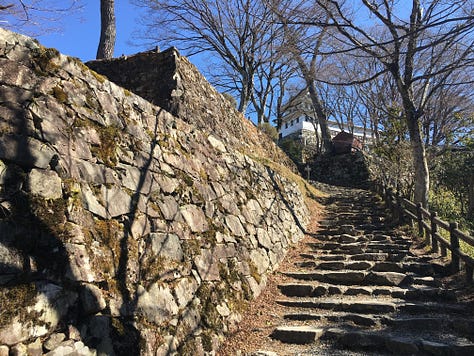
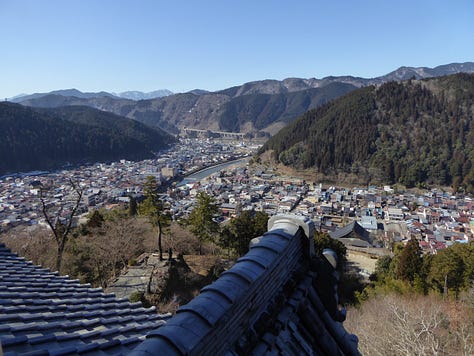
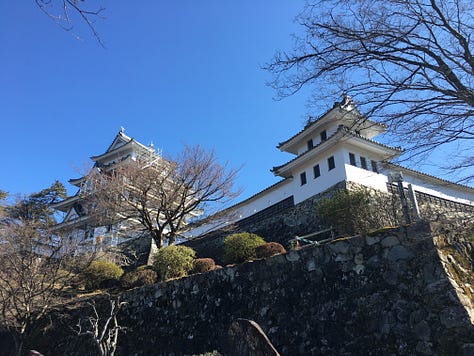
The Endo clan came into decline through internal conflicts and was transferred to a smaller Kanto domain in 1693. The castle then came under the control of various daimyo, including the Inoue from 1693-1697, the Kanamori clan from 1697 until they were dismissed in 1758 and finally the Aoyama who ruled for 110 years from 1758 to the end of the Edo period in 1868.
In 1754, when the Kanemori clan were in control, the Gujo Ikki riots occurred. Lord Kanamori had overspent on bribes to authorities in Edo, and on maintaining a luxurious lifestyle, and to cover the costs had repeatedly raised local taxes, putting unbearable strain on the peasants. Time and again, the farmers and townsfolk had requested Kanamori reduce taxes, and each time while promising he would, soon found another reason to increase the fees yet again. Unable to move the Lord Kanemori, in desperation a group of peasants made the journey to Edo and appealed directly to the shogun. For having overstepped their mark, the peasants were all executed, but their efforts did bring about the removal of the Kanemori who were replaced by the Aoyama clan.
There were around 3,000 of these ikki riots during the Edo period, and this Gujo Ikki was the only one to be recognized as successful. It was the only time the demands of a peasant uprising were ever met by the authorities, and their story was made into a movie around 20 years ago. The Aoyama clan controlled Gujo Hachiman until the end of the Edo Period. Incidentally, Tokyo’s Aoyama district is named after the Aoyama clan, who had their Shimo Yashiki, lower clan residence there.
Gujo Hachiman was demolished in 1870 in accordance with the Meiji Restoration ordinances. In 1933, about the time that Osaka Castle’s keep was being reconstructed in concrete, Gujo Hachiman’s keep was reconstructed in timber, and although rebuilt in wood, it is not architecturally correct, being made based on the design of the former National Treasure designated Ogaki Castle, also in Gifu Prefecture. However the inside is completely different. It is a modern timber framed structure inside, built to look like a traditional castle keep on the outside. Gujo Hachiman’s keep is easy to climb with a central stair case and acts as a local museum displaying an interesting array of arms and armour. In particular, a set of armour worn by Endo Yoshitaka, and another set passed down through the Aoyama clan take pride of place.
Visible from almost anywhere in the charming town below, it’s a steep walk up the hill to the keep from the Jokamachi Plaza bus stop or from the town’s tourist office, but from the top, the view is fantastic. On the way up, look out for the statue of Chiyo Hime, daughter of the first lord, Endo Morikazu, and her husband, Yamanouchi Katsutoyo. It was the wise actions and advice of the wife Chiyo that is said to helped her husband rise in the ranks, and become a daimyo in his own right.
In the summer, the breeze flowing through the valley is cooling, and the mountain is often covered in mists and haze, but the white walls and tenshu keep seen against the lush greenery of the surrounding mountain stands out. In autumn, the bright orange and yellows contrast with the white keep and clear blue skies. In winter when the snow gathers on the ishigaki stone walls and in spring when the first greenery and cherry blossom flowers brighten the world, Gujo Hachiman offers a range of sights. As the novelist Shiba Ryotaro said, Gujo Hachiman would indeed have to be one of the most picturesque mountain castles in Japan.





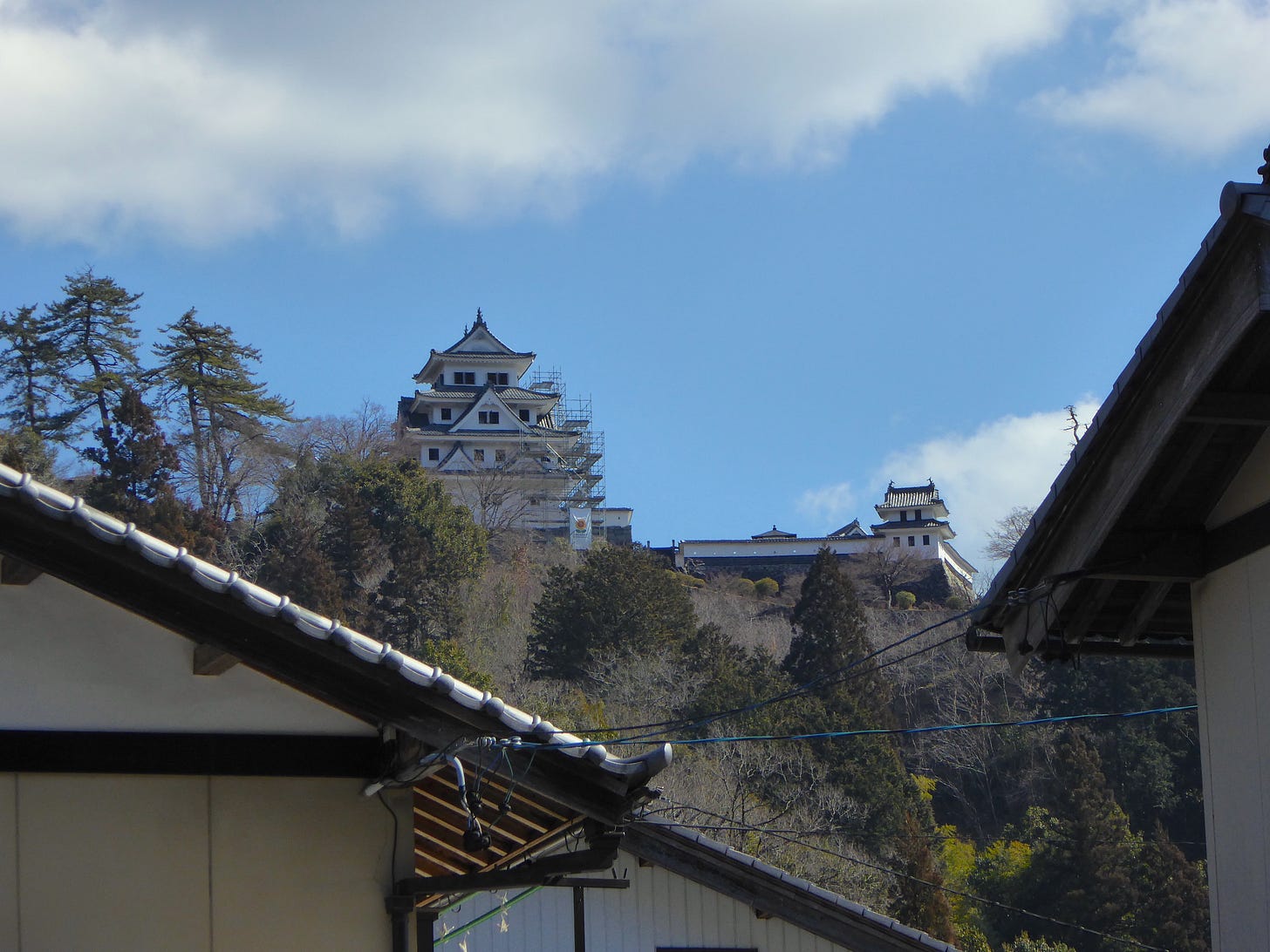
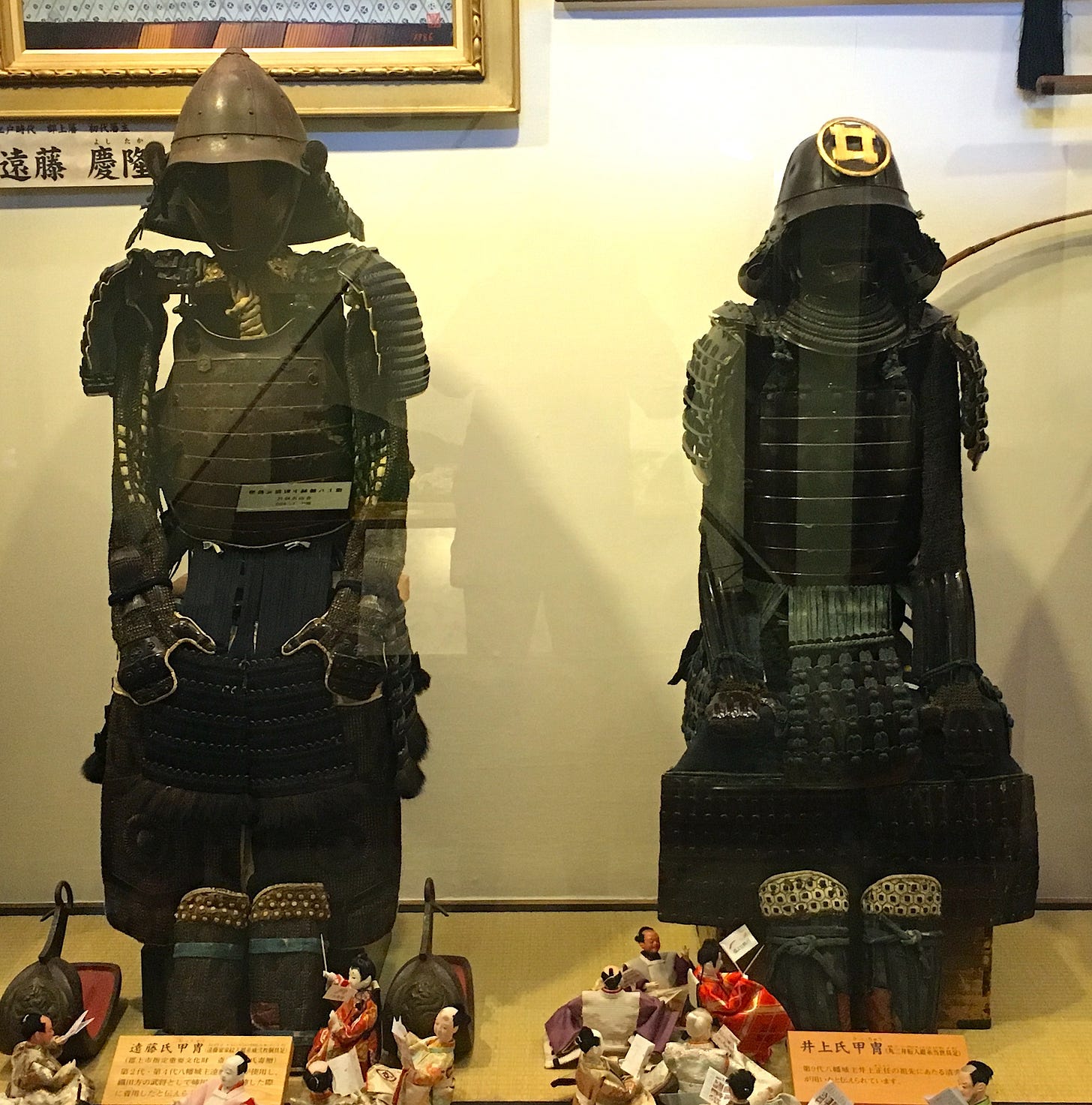
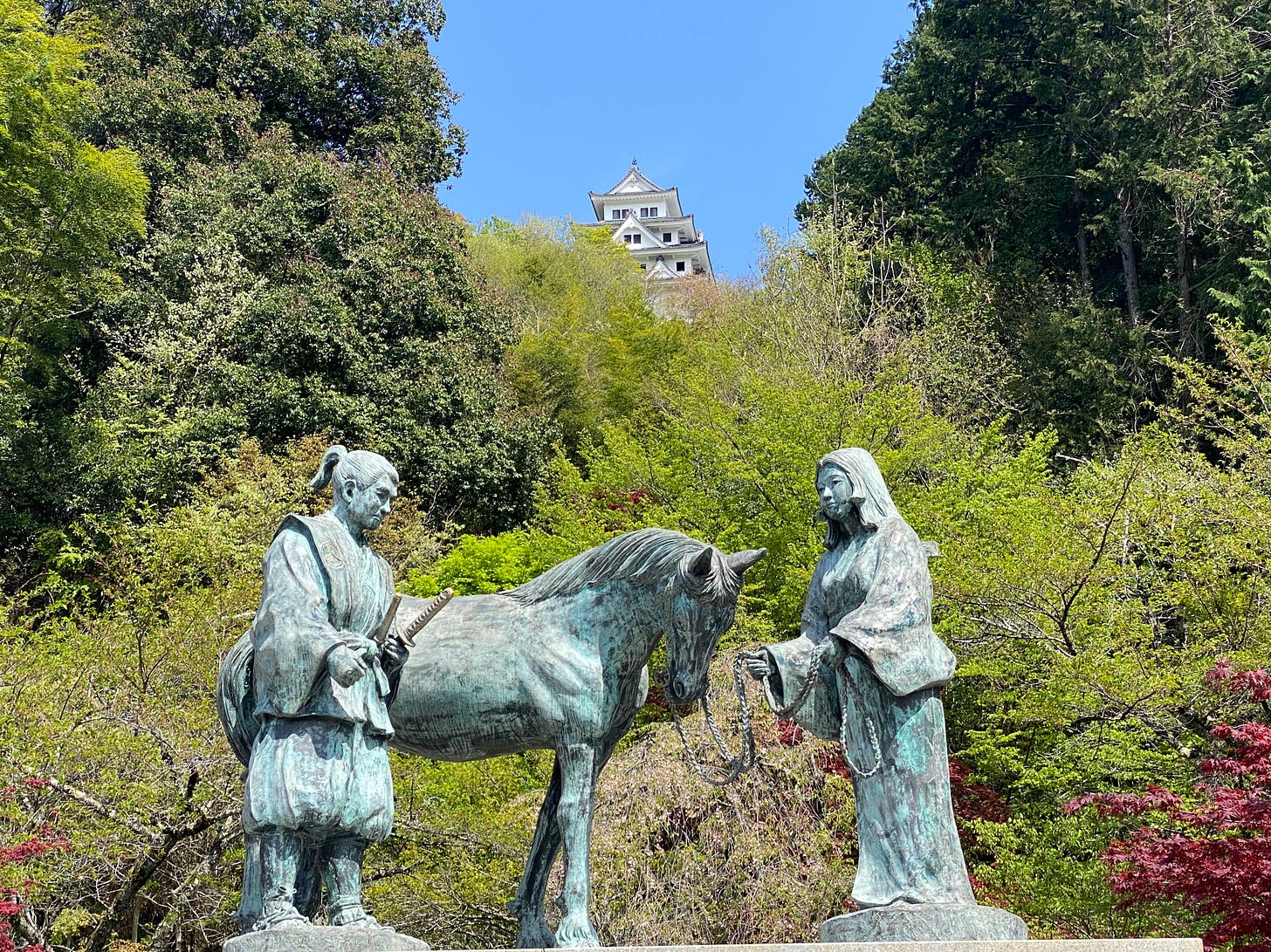
It’s rough they were executed, sacrificed themselves for the greater good (not that that was guaranteed). Is there also a kabuki story about this? It seems somewhat familiar, maybe saw something on the NHK show. Nice pics Chris!